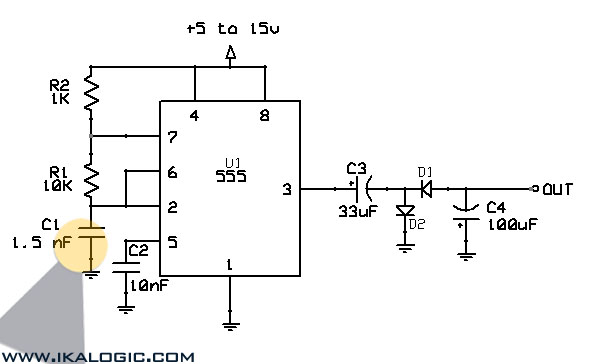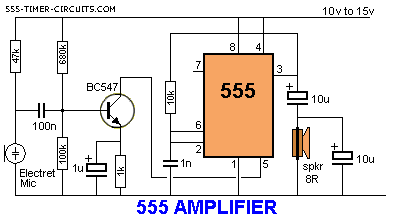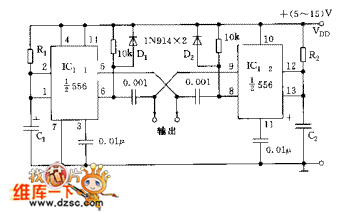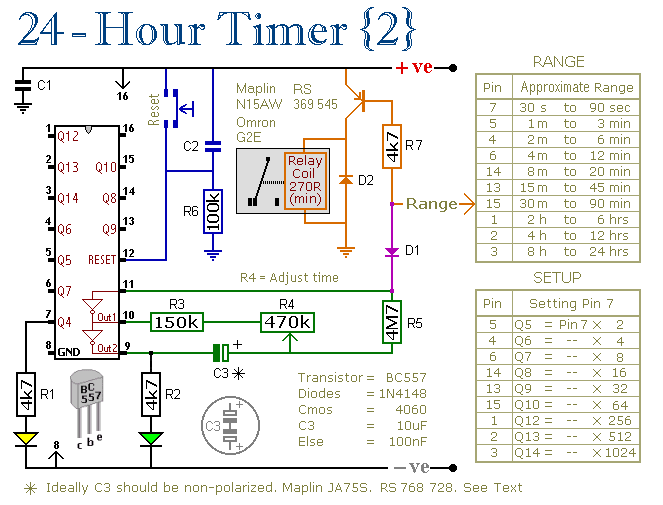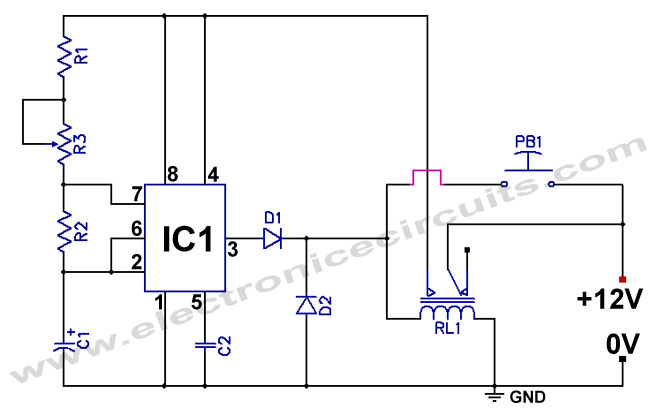
555 timer compo entry 2
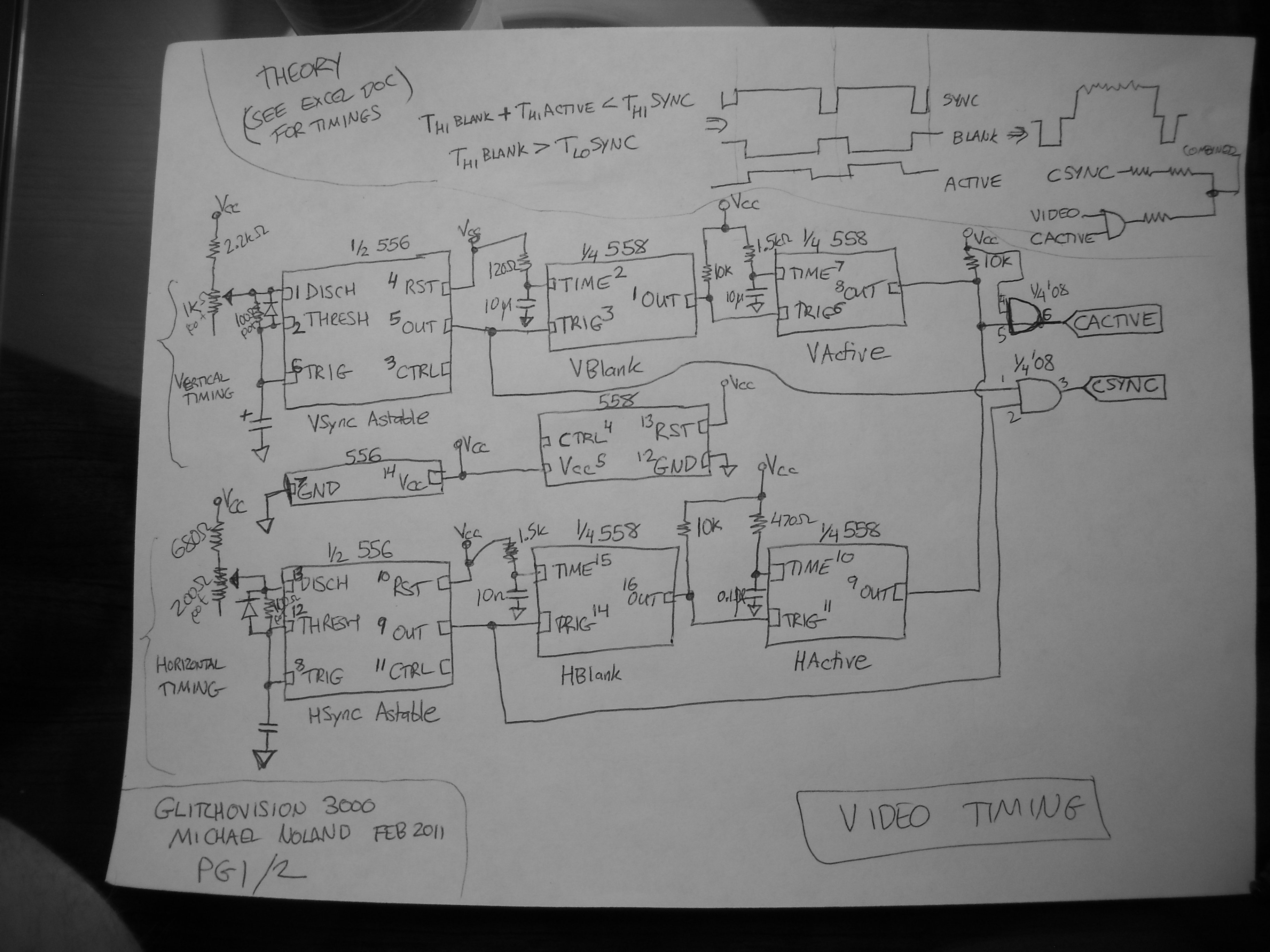
This entry describes a four-step sequencer that controls an Atari Punk synth, accompanied by a grayscale NTSC video visualization of the output audio. The system is constructed using two 558 quad-timers and two 556 dual-timers. The video quality may not be optimal, as a direct capture is planned for a later date. Assembling the necessary components, including potentiometers and switches, requires considerable time. The signals generated are lower than the specifications outlined in the RS170 standard (3 lines for vertical sync, 10.9 microseconds for horizontal sync), although the final output does not fully comply with RS170 specifications. Instead, it produces a combined or industrial sync, which has been compatible with every television tested. RS170 requires serrating and equalizing pulses during vertical sync to maintain tracking with older horizontal sync oscillators. Each blanking signal is processed through a 558 monostable timer, which generates a blanking signal that lasts longer than the sync signal and is delayed until the image is past the overscan. The two sync signals are merged using an AND gate to create a CSYNC signal, while the two active signals are combined (using a wired AND from the open-collector outputs of the 558, buffered through another AND gate) to generate a CACTIVE signal. One of the 558 quad timers functions as a four-step sequencer, akin to a traditional 4017 decade counter. All four steps share the same timing components, but the overall step rate is adjustable by varying the control voltage for the 558 timer. Multiple 558 timers can be connected to extend the sequence length, although only four steps were implemented with switches and potentiometers. The sequencer output is integrated with the left potentiometer of the Atari Punk synth, which is implemented in the other 556 timer, merging the two for timing in the astable portion of the synth. The monostable section of the Atari Punk operates in a conventional manner, triggered by the astable section. The audio output is conditioned for line-level output and is also combined with the CACTIVE signal through mixing pots to create a final video signal.
Note 1: Incorporating a reset switch in place of relying on power sequencing during startup is a beneficial enhancement. This feature was not present in the prototype shown in the video, but it is included in the schematic as a dashed box. It would also allow for a "tap to the rhythm" reset, though it would not halt later stages in the same way a reset on a 4017 would.
Note 2 and 3: Adding a pair of diodes could help maintain the control voltage range between approximately 0.7 to 4.3 volts, or using fixed-value resistors may prevent issues when the control voltage deviates significantly.
Note 4: The additional 558 timer on the lid board remains unused. It is partially wired but not integrated into the countdown of the primary 558 sequencer due to time constraints that prevented the wiring of the remaining four switches and potentiometers.
Note 5: Utilizing the opposite ends of the sequencer potentiometers as part of the timing circuit for another 558 timer, which counts down after being triggered on vertical blanking, could provide a visual representation of the notes. This would require relocating the switches to follow the potentiometers.
The design integrates complex timing and sequencing functions for audio synthesis and video output, showcasing the versatility of the 558 and 556 timer ICs in creative electronic applications. The approach allows for significant customization and expansion, making it suitable for experimental audio-visual projects.This entry is a 4 step sequencer controlling an `Atari Punk` synth with a greyscale NTSC video visualization of the output audio, built using two 558 quad-timers and two 556 dual-timers. Sorry in advance for the poor video quality, I will try to get a direct capture next week when I get back from GDC, but I was in a rush to make the contest deadli
ne. Soldering up all those potentiometers, switches, etc. takes a suprising amount of time. These signals are low for the time specified in the RS170 standard (3 lines for vsync, 10. 9 us for hsync), although the final result isn`t exactly up to RS170 spec. It generates a `combined` or industrial sync (which works on every TV I`ve ever tested), but RS170 requires serrating and equalizing pulses to be generated during vsync to prevent 1950s hsync oscillators from losing tracking. Each blanking signal is fed into a 558 monostable timer, which generates the blanking signal (lasting longer than the sync signal and delaying until the image is about past the overscan).
The two sync signals are combined with one AND gate into a CSYNC signal and the two active signals are combined (with wired AND from the 558 open-collector outputs, but buffered into another AND gate) to generate a CACTIVE signal. One 558 quad timer serves as a 4 step sequencer, similar to a traditional use of a 4017 decade counter.
All four steps use the same timing components, but the overall step rate is controlled by varying the control voltage for the 558 timer. You can chain several 558`s together to get longer sequence lengths, but I only ended up wiring switches and pots for 4 steps.
The output of the sequencer is combined with the `left` potentiometer of an atari punk synth implemented in the other 556 (conflating the two for the timing of the astable portion of the synth). The monostable portion of the Atari punk is bog standard, triggered by the astable portion. The audio output is line conditioned and output, as well as being ANDed with the CACTIVE signal and merged with CACTIVE via some mixing pots to generate a final video signal.
Listen and see that atonal goodness. Note 1: Adding a reset switch instead of relying on power-sequencing during startup seems like a solid addition. I didn`t have it in the prototype shown in the video, so it`s listed in the schematic in a dashed box.
It would also provide a nice `tap to the rythm` reset, although it wouldn`t stop the later stages from playing like a reset on a 4017 would. Note 2, 3: Adding a pair of diodes here to keep the range of CV to ~0. 7 to 4. 3 V, or even some fixed value resistors should help prevent nastyness when the control voltage is taken too far out of whack.
Note 4: The other 558 in the lid board isn`t used. It`s partially wired up, but it`s not tied into the countdown of the main 558 sequencer, as I didn`t have time to wire up the other 4 switches and pots. Note 5: Using the opposite end of the sequencer potentiometers as part of the timing circuit for another 558 counting verticallly downwards after triggering on vblank (and wired-ANDing the outputs from them with the output of the sequencer 558) should provide a visual indication of what the notes are (will need to move the switches to after the potentiometers).
🔗 External reference
Note 1: Incorporating a reset switch in place of relying on power sequencing during startup is a beneficial enhancement. This feature was not present in the prototype shown in the video, but it is included in the schematic as a dashed box. It would also allow for a "tap to the rhythm" reset, though it would not halt later stages in the same way a reset on a 4017 would.
Note 2 and 3: Adding a pair of diodes could help maintain the control voltage range between approximately 0.7 to 4.3 volts, or using fixed-value resistors may prevent issues when the control voltage deviates significantly.
Note 4: The additional 558 timer on the lid board remains unused. It is partially wired but not integrated into the countdown of the primary 558 sequencer due to time constraints that prevented the wiring of the remaining four switches and potentiometers.
Note 5: Utilizing the opposite ends of the sequencer potentiometers as part of the timing circuit for another 558 timer, which counts down after being triggered on vertical blanking, could provide a visual representation of the notes. This would require relocating the switches to follow the potentiometers.
The design integrates complex timing and sequencing functions for audio synthesis and video output, showcasing the versatility of the 558 and 556 timer ICs in creative electronic applications. The approach allows for significant customization and expansion, making it suitable for experimental audio-visual projects.This entry is a 4 step sequencer controlling an `Atari Punk` synth with a greyscale NTSC video visualization of the output audio, built using two 558 quad-timers and two 556 dual-timers. Sorry in advance for the poor video quality, I will try to get a direct capture next week when I get back from GDC, but I was in a rush to make the contest deadli
ne. Soldering up all those potentiometers, switches, etc. takes a suprising amount of time. These signals are low for the time specified in the RS170 standard (3 lines for vsync, 10. 9 us for hsync), although the final result isn`t exactly up to RS170 spec. It generates a `combined` or industrial sync (which works on every TV I`ve ever tested), but RS170 requires serrating and equalizing pulses to be generated during vsync to prevent 1950s hsync oscillators from losing tracking. Each blanking signal is fed into a 558 monostable timer, which generates the blanking signal (lasting longer than the sync signal and delaying until the image is about past the overscan).
The two sync signals are combined with one AND gate into a CSYNC signal and the two active signals are combined (with wired AND from the 558 open-collector outputs, but buffered into another AND gate) to generate a CACTIVE signal. One 558 quad timer serves as a 4 step sequencer, similar to a traditional use of a 4017 decade counter.
All four steps use the same timing components, but the overall step rate is controlled by varying the control voltage for the 558 timer. You can chain several 558`s together to get longer sequence lengths, but I only ended up wiring switches and pots for 4 steps.
The output of the sequencer is combined with the `left` potentiometer of an atari punk synth implemented in the other 556 (conflating the two for the timing of the astable portion of the synth). The monostable portion of the Atari punk is bog standard, triggered by the astable portion. The audio output is line conditioned and output, as well as being ANDed with the CACTIVE signal and merged with CACTIVE via some mixing pots to generate a final video signal.
Listen and see that atonal goodness. Note 1: Adding a reset switch instead of relying on power-sequencing during startup seems like a solid addition. I didn`t have it in the prototype shown in the video, so it`s listed in the schematic in a dashed box.
It would also provide a nice `tap to the rythm` reset, although it wouldn`t stop the later stages from playing like a reset on a 4017 would. Note 2, 3: Adding a pair of diodes here to keep the range of CV to ~0. 7 to 4. 3 V, or even some fixed value resistors should help prevent nastyness when the control voltage is taken too far out of whack.
Note 4: The other 558 in the lid board isn`t used. It`s partially wired up, but it`s not tied into the countdown of the main 558 sequencer, as I didn`t have time to wire up the other 4 switches and pots. Note 5: Using the opposite end of the sequencer potentiometers as part of the timing circuit for another 558 counting verticallly downwards after triggering on vblank (and wired-ANDing the outputs from them with the output of the sequencer 558) should provide a visual indication of what the notes are (will need to move the switches to after the potentiometers).
🔗 External reference

